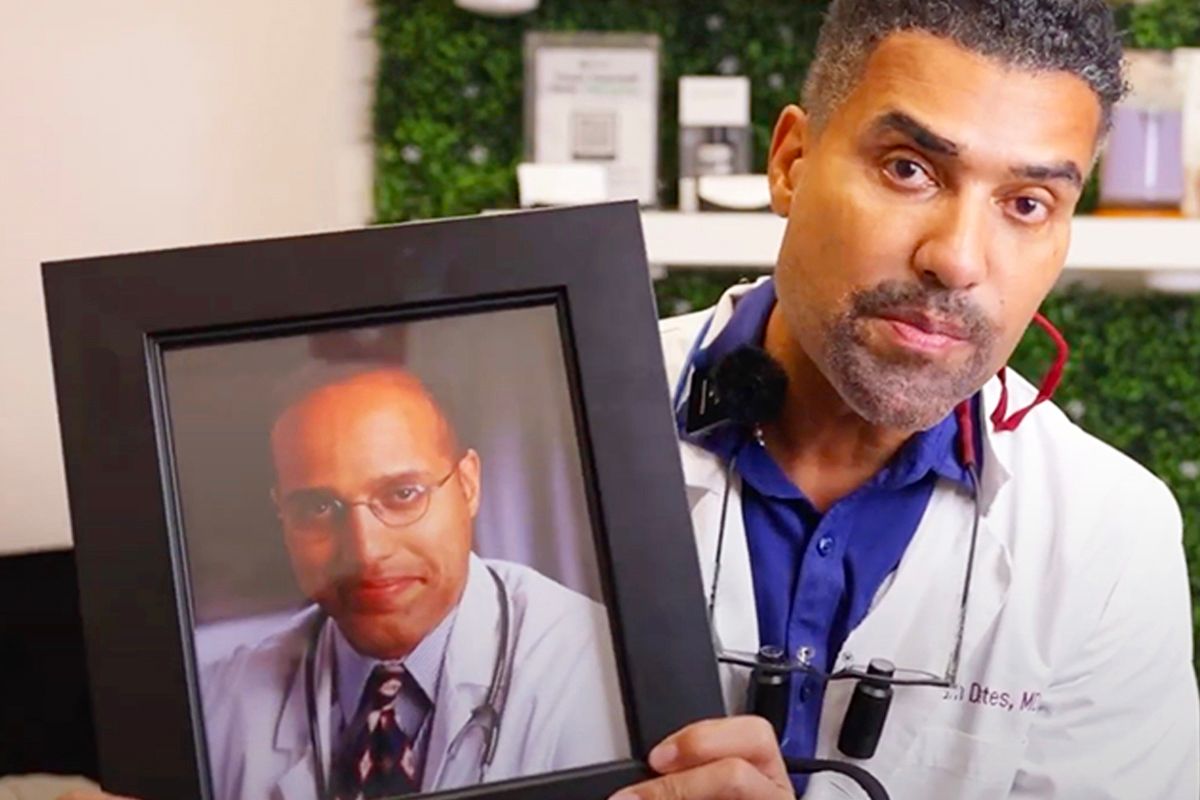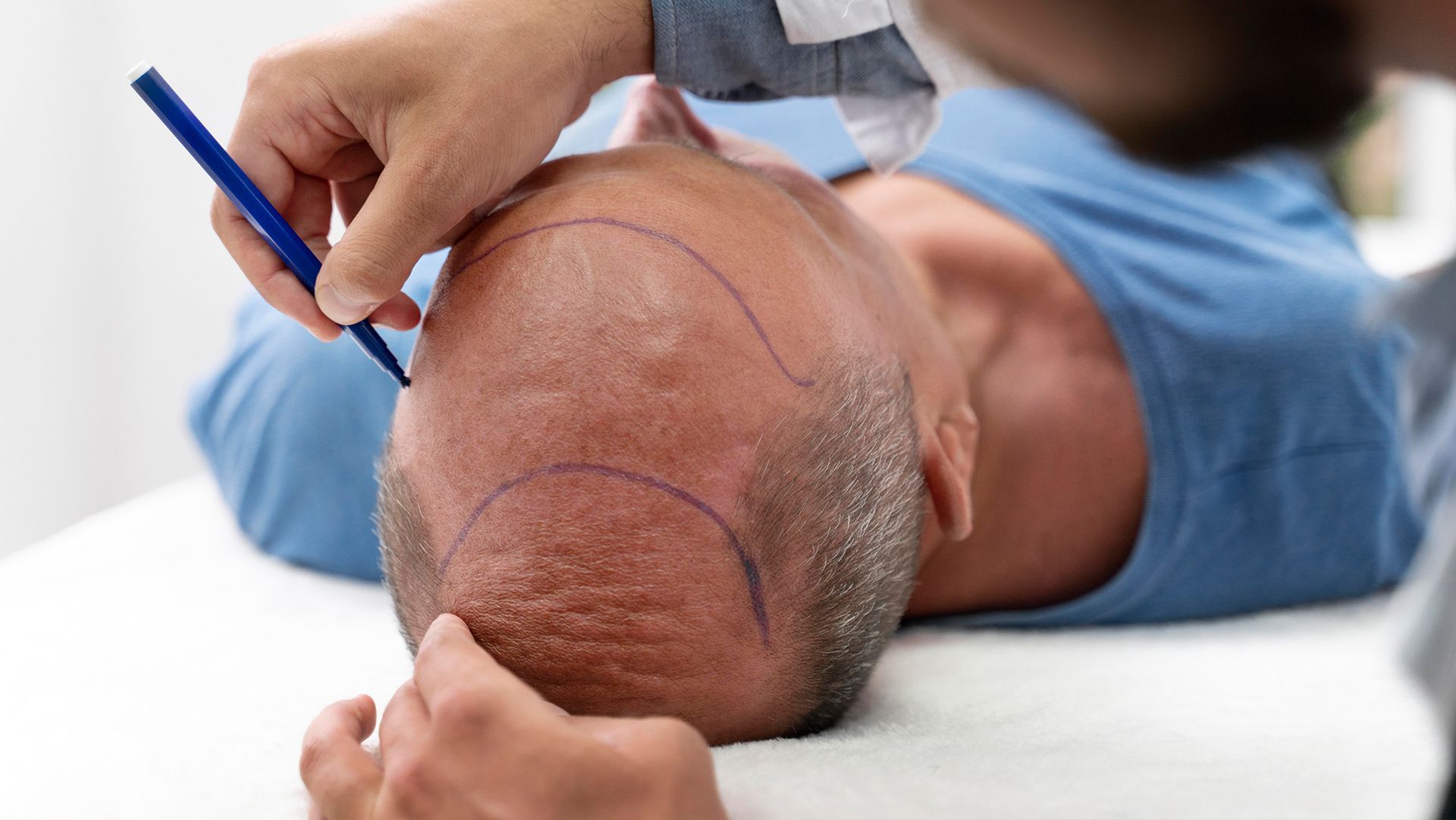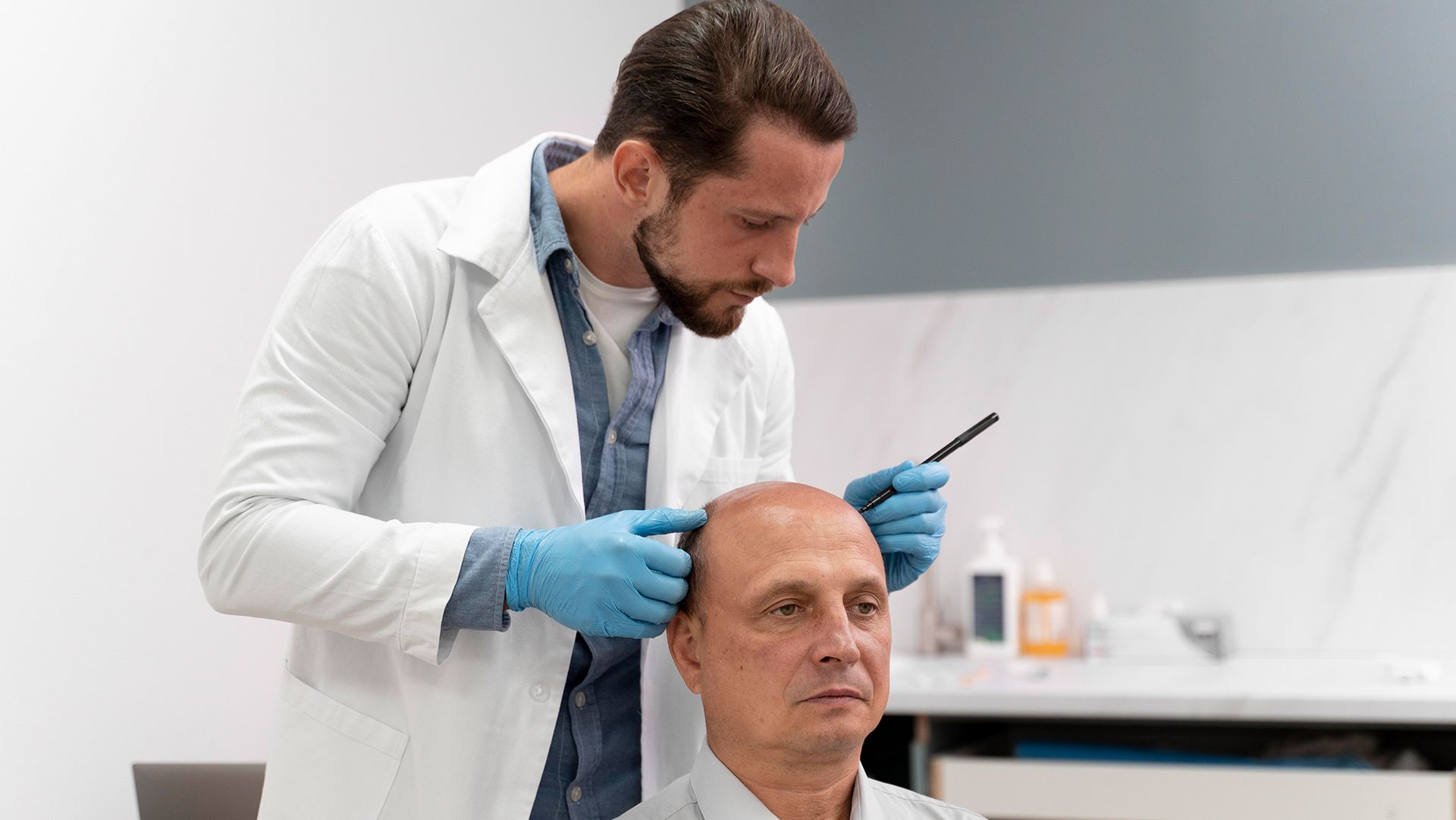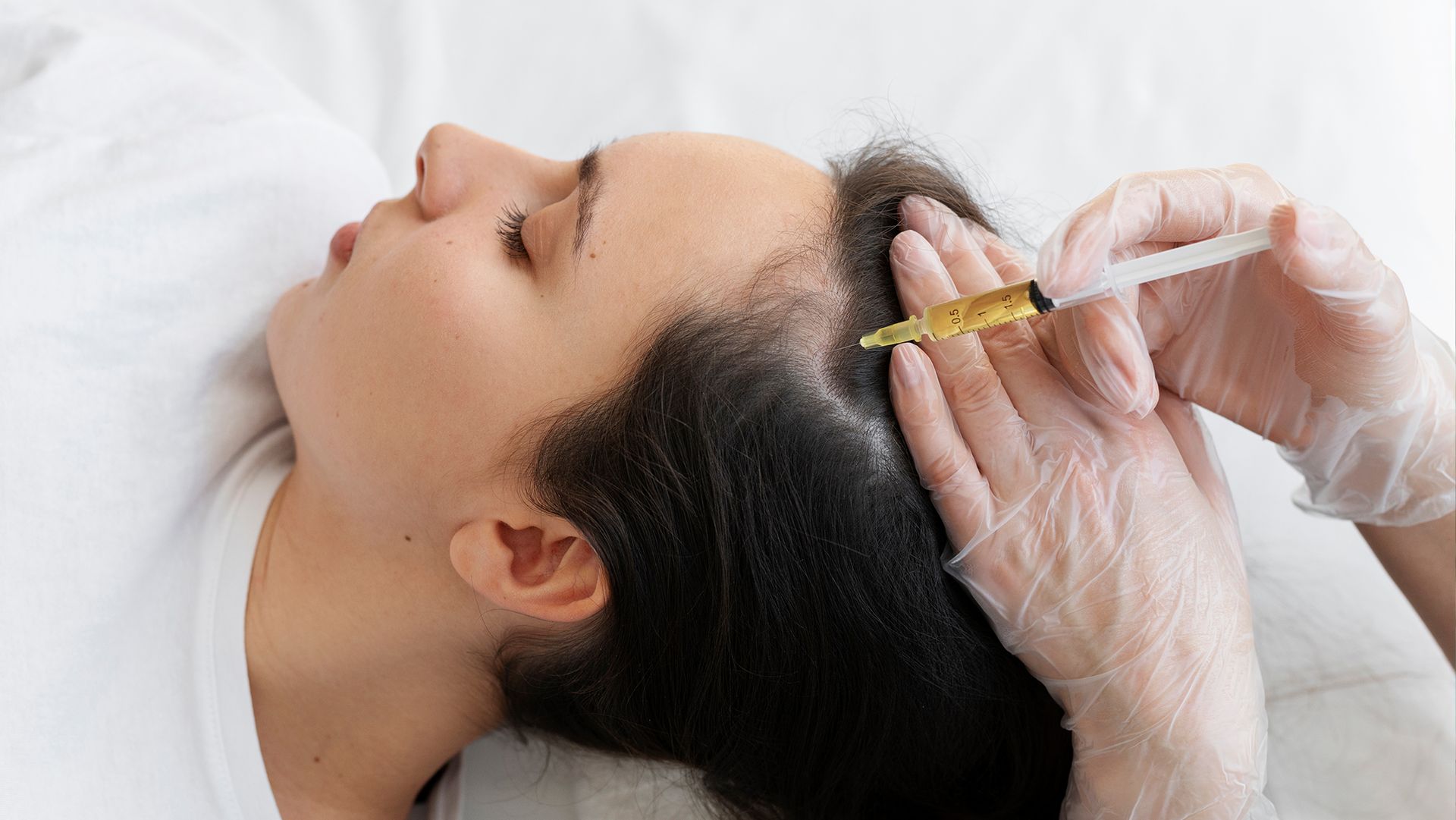Who Is a Good Candidate for PRP Therapy for Hair Loss?
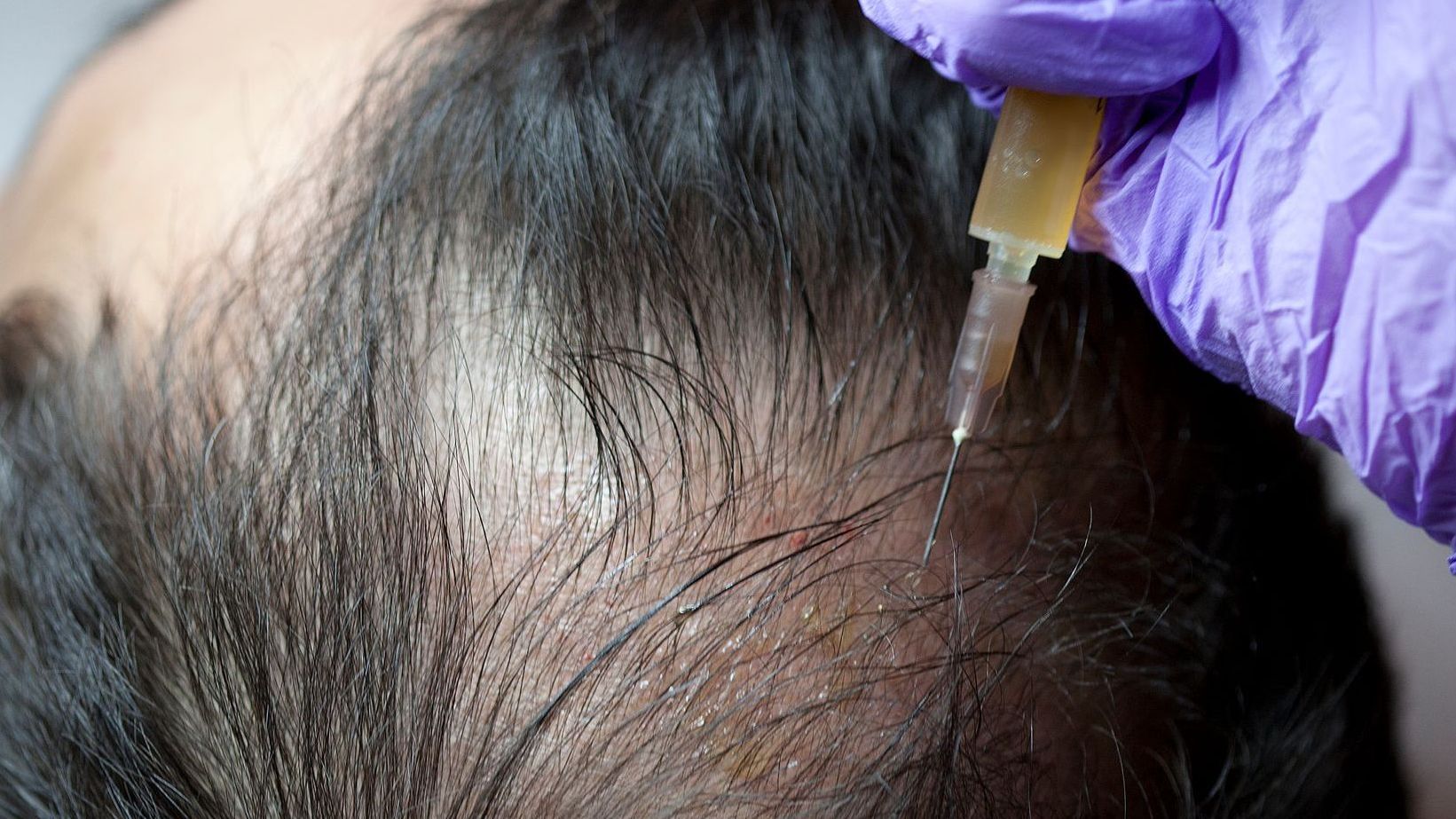
PRP (platelet-rich plasma) injections help thicken thinning hair. Studies are still being conducted to figure out exactly why PRP therapy does this, but what’s more important is that it helps with new hair growth. For people who are not able to get a hair transplant for any reason, PRP therapy is an excellent alternative and can result in thick, natural-looking hair after about 6 months. There is still more research needed for PRP therapy for hair growth, but the results we do have show that customers walk away with positive experiences.
PRP (platelet-rich plasma) therapy is best for people with
male and female pattern baldness with a regular or average amount of platelets in their blood and who still have some hair, although it is thinning. Catching this hair loss or thinning early will get you the best results. If you have lost all your hair for a reason outside of pattern baldness or genetics, you may need to look into other hair recovery options. If you have a low platelet count, you should consider a different treatment, as well. You can be anywhere
from 18 to your 70s to get PRP therapy.
PRP therapy starts by drawing about 30 milliliters of blood, then putting this blood into a centrifuge to separate out the platelet-rich plasma. This plasma will then be prepared in a syringe. Your scalp will be numbed and sometimes there will be a micro-needling step where your specialist creates superficial incisions along your thinning hairline and then the platelet solution is injected over and into those incisions.
Preparing for your PRP therapy treatments should be intentional. Slow down with or cut out
alcohol, cigarettes, and caffeine 2 days before and after treatment. Try to drink 8 glasses of water a day on the day of your appointment and the days following. Avoid anything like fried, heavy food, alcohol, cigarettes, etc. Sometimes smokers have a
more difficult time healing after PRP therapy.
PRP therapy involves micro-needling your scalp and injecting the platelet rich plasma solution into your scalp. Your scalp will be numbed before injecting the platelet rich plasma. You should also come prepared to have your blood drawn during your appointment. It is necessary for your blood to be drawn at the appointment before it is divided into the plasma injection, so make sure you’ve eaten ahead of your appointment.
Avoid anti-inflammatory drugs as these could affect your blood clotting and healing process. Don’t do any strenuous exercise or activity after your PRP therapy sessions. Rest and be gentle with the area where your scalp was injected. Avoid caffeine 24 hours before and after your PRP therapy appointment as it can affect blood flow. Avoid any strenuous activity for 4 hours before your PRP appointment - this could affect the blood flow to your scalp.
Try to rest in the days following your PRP therapy appointments. Don’t do anything that requires high heat or sweating. You don’t want to put any strain or stress on your new hair growth.
Doctors may recommend PRP therapy if you are not able to get a different type of hair recovery treatment, like a hair transplant. Doctors recommend
3-4 sessions over 3-4 months for the best results, but you can continue to get 1-2 sessions per year if you hope to continue those good results. After your initial 3-4 sessions, continue to do
1-2 sessions per year for best results. Follow your doctor's instructions and take your medication regularly. Patience is also key when it comes to a successful hair regrowth journey. Your PRP therapy will ideally result in new hair growth. This new hair will still be subject to aging, graying, and genetics, but the results will last.
Research on PRP therapy is still being done, but in
most control groups, PRP therapy helped with hair loss. PRP is considered safe when performed at a certified facility. Some facilities may offer lower prices, but it is important for your safety that you get this procedure done by a
qualified professional. PRP will sometimes not work for people who are experiencing hair loss for a reason other than male or female pattern baldness (examples: stress hair loss, alopecia, and types of scarring hair loss). PRP can also result in hair shedding, redness, swelling, headaches, and pain at the injection site. There are not many risks with PRP hair therapy. The process involves the injection of platelet rich plasma from your own body, so there is no risk of rejection. If you have bleeding disorders or a history of cancer, PRP therapy may not be right for you.
PRP therapy could fail if your blood is not platelet-rich enough. PRP works best for those with average or higher platelet counts. There is a minimal chance that PRP could cause blood clots. Talk to your doctor about any abnormal pain or headaches after your therapy sessions. After your PRP sessions, you may experience some hair shedding. Your hair is adjusting to the new environment and some may shed to get out of the way for new hair growth. There is no guarantee that PRP therapy will get your hair back to normal, but our results speak for themselves. Most of our customers are able to walk away with the confidence they’ve been missing after our PRP therapy sessions. PRP does work best for people with genetic pattern baldness, though, so if your hair loss comes from a different cause, talk to an expert about what hair recovery treatment may be best for you.
PRP is still technically an experimental treatment. Since the platelet rich plasma injection is not a drug, that injection would not be able to be FDA-approved, but the treatment itself is still unapproved. The equipment needed for this treatment is FDA-approved, but because the treatment is not, your insurance may not cover it.
PRP therapy for hair loss has
excellent results, especially when done in conjunction with other hair recovery techniques or medications like minoxidil. PRP therapy is an effective alternative for those who cannot get hair recovery treatments like hair transplants. PRP therapy for hair loss is often recommended as an alternative to a hair transplant.
Book your first session of PRP therapy with Dr. Yates Hair Sciences today. Dr. Yates has been using PRP Therapy for hair loss for over 15 years, so you can be confident you are getting the best possible care and the best possible results. Our offices are equipped with state-of-the-art technology to make you comfortable and safe.
Get started on your path to hair regrowth today!

